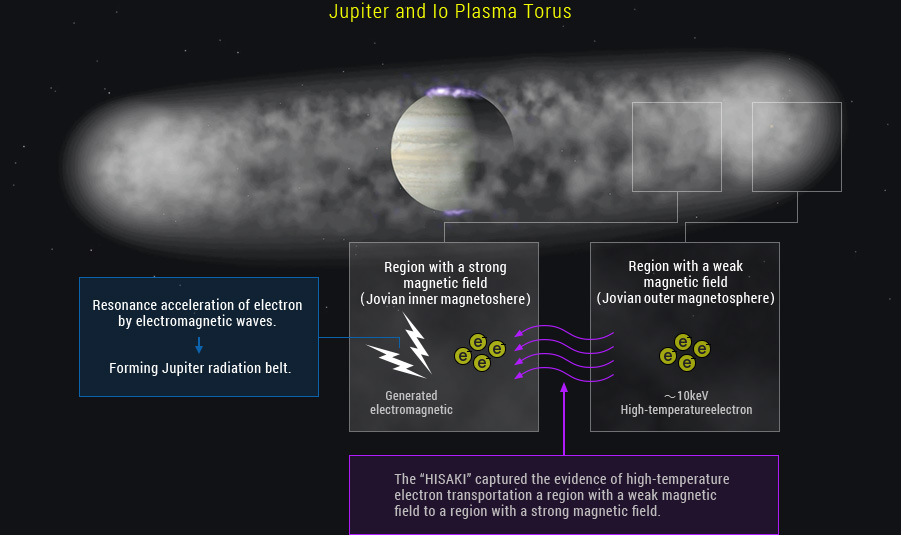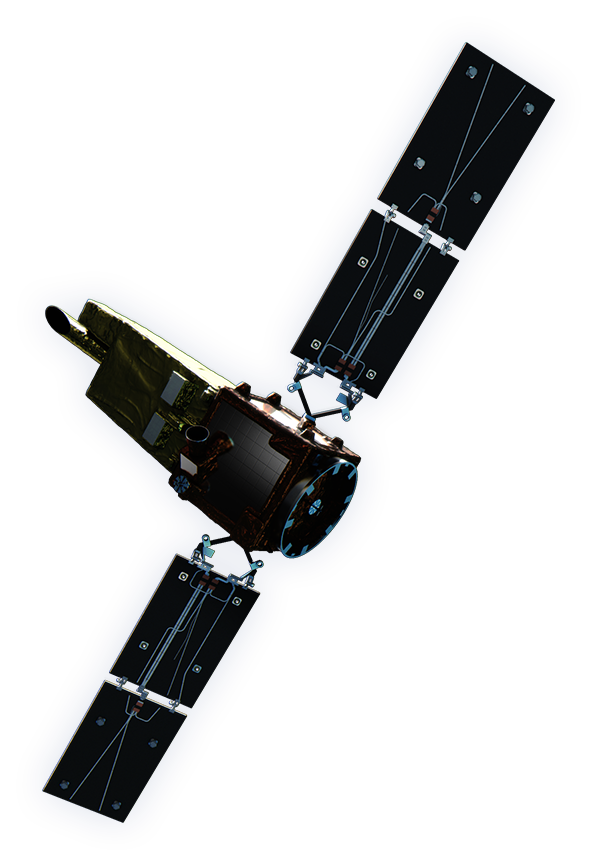
Extreme ultraviolet spectroscope for Exospheric Dynamics (HISAKI, SPRINT-A) is the world's first space telescope for remote observation of the planets such as Venus, Mars, and Jupiter from the orbit around the earth.
Venus and Earth may be called twins planet, and it recently becomes clear that three terrestrial planets in the solar system including Mars have very similar environment in the beginning era of the solar system. However, in three planets, which could be called the brothers, during the finite period within one billion years after the birth of the solar system each environment evolution of growth and change results into the different and specific current state. At Venus, it became the very dry atmosphere consisting mainly of carbon dioxide as a result that water ran away to outer space, and it is now the scorching world where the temperature of its surface reaches 400 degrees Celsius by the strong greenhouse effect. On the other hand, in Mars, most of atmospheric carbon component producing the greenhouse effect run away to outer space, and it is now in the chilly world.
In the Extreme ultraviolet spectroscope for Exospheric Dynamics mission, the mechanism that the atmosphere of these terrestrial planets runs away to outer space is one of scientific objectives. Because in the beginning era of the solar system the sun had more intensely activity than the present, and because the very strong solar wind arrived at the planet, it is in particular thought that a large quantity of atmosphere ran away. The study on interaction of the strong solar wind on the atmosphere of the planet leads to acquiring knowledge of history in the early stage of the solar system.
Furthermore, HISAKI will also perform an observation of extreme ultraviolet light from the satellite Io of the Jupiter, and examines how to transfer energy in the plasma environment of the Jupiter from an observation of a sulfur ion flowing out from Io.
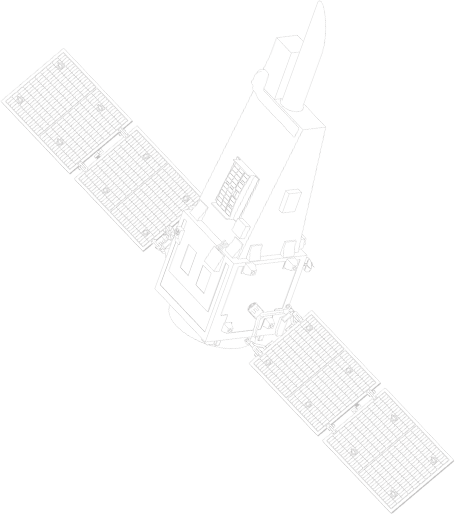
| International Designation Code |
2013-049A |
|---|---|
| Name | HISAKI (SPRINT-A) |
| Objectives | Jupiter's Io torus and Planetary exospheric escape by an EUV spectroscopy observation |
| Launch Date | 14:00, September 14, 2013 (JST) |
| Launch Location | Uchinoura Space Center (USC) |
| Launch Vehicle | Epsilon |
| Configuration Weight | 348kg |
| Orbit Altitude | Apogee 947km, Perigee 1157km |
| Orbit Inclination | 29.7° |
| Orbit Period | 106min. |
| Type of Orbit | Elliptical |
| Scientific Instruments | Extreme UltraViolet (EUV) spectroscope (EXCEED) |
Satellite's nickname "HISAKI" was named after Hisaki headland located nearby launch site, where the local fishermen pray for safe sailing.


"Hisaki" (SPRINT-A) deals with the diversity of the planets in solar system by optically measuring the Jupiter inner-magnetosphere and atmospheric escape from the terrestrial planet by the optics observation from the earth orbit. "Hisaki" detects a spectrum of the invisible light called extreme ultraviolet rays.

SPRINT-A (HISAKI) is the 1st satellite using SPRINT bus system, which was developed simultaneously with the development of HISAKI itself. SPRINT bus aimed to realize the small scientific satellites as complement of existing scientific satellite lineup at ISAS/JAXA.
SPRINT bus will satisfy a variety o demands from the science communities by realizing satellites in short term at low cost. For this purpose, the flexible standard bus was developed, with the modular structure connected via SpaceWire network.

- 1. Thin-Film Solar Cells
- 2. Lithium Ion Capacitor (LIC) Battery




-Mar. - Jul. in 2010
Engineering Tests
Various tests determine the thermal and structure design of the satellite.




-Mar. - May in 2012
Mechanical and Electrical Interface Test
Overall interface check using the flight model




-Oct. - May in 2012 - 2013
Flight model check
Final check on the ground.




-Jun. - Sep. in 2013
Flight Operation







Paper List
Completed: More than 10 years of observations

The planetary spectroscopic observatory, HISAKI, completed its mission as a space telescope dedicated to planetary observation with a shutdown operation on 8 December 2023. The cessation of transmissions from Hisaki will be confirmed over a week to complete all tracing work. The extreme ultraviolet spectroscopic data of the planets such as Jupiter, Mars and Venus, observed over a period of more than ten years are irreplaceable. It was a project full of firsts: the first satellite to use a semi-custom bus system, the first satellite to use the satellite operation system of the Generic Spacecraft Test and Operations Software (GSTOS), and the first payload to be launched on an Epsilon rocket vehicle. The mission would not have been possible without the support of many people. We would like to express our deep and inexpressible gratitude to all those who have supported, cooperated and cheered us on during the observation operations. Thank you very, very, very much, and see you again!
Observations to be terminated

Launched in September 2013 from the Uchinoura Space Centre by the Epsilon launch vehicle, the small scientific satellite Hisaki has been observing Jupiter, Mars and Venus as a dedicated planetary space telescope, and has achieved epoch-making results, including numerous observations of the planets' upper atmospheres and magnetospheres with extreme ultraviolet spectroscopic observations. The satellite has operated for more than 10 years, well beyond its design lifetime of one year. However, the satellite can no longer maintain the required accuracy of observations due to secular changes and we have decided to terminate its observations in December 2023, judging that it has fulfilled its mission. The end of operations will be announced on our website.
Observations during a major dust storm on Mars

The Hisaki observations reveals that the abundance of hydrogen in the upper atmosphere of Mars gradually increases because of water vapor transportation from the lower atmosphere, while the abundance of oxygen temporarily decreased. This indicates that with increasing escape of hydrogen, oxygen will less efficiently escape from the upper atmosphere during dust storms, leading to a more oxidized atmosphere. If this condition has repeatedly occurred during each dust storm over hundreds of millions of years of Martian history, the Martian atmosphere would have been oxidized by dust storms. This suggests that Mars had a more reduced atmosphere in the past than it does today. Because the synthesis of organic matter, which constitutes life, is more likely to occur in a reducing atmosphere, the findings of this study may provide insights into the past Martian life environment.
Published in Nature Communications. (Masunaga et al., 2022, "Alternate oscillations of Martian hydrogen and oxygen upper atmospheres during a major dust storm", DOI: 10.1038/s41467-022-34224-6)
Hisaki’s first astrophysical result

A team of US and Japanese scientists have used Spectroscopic Planetary Observatory, HISAKI, to study a cluster of galaxies (RCS2 J232727.6-020437) at 6.4 billion light years away with the Chandra X-ray telescope. It is expected that the gas filled between the galaxies, the so called "intracluster medium", become lower temperatures as a result of emitting X-ray at the center of the cluster, which is called "radiative cooling". However, this observation result showed that there is less cooled gas than expectation. The results suggest that unknown mechanism to maintain a high temperature exists.
Published in the Astrophysical Journal of AAS. (Su et al. 2019, "The First Astrophysical Result of Hisaki: A Search for the EUV He Lines in a Massive Cool Core Cluster at z = 0.7", DOI: 10.3847/1538-4357/ab2cd0)
Jupiter’s complex transient auroras
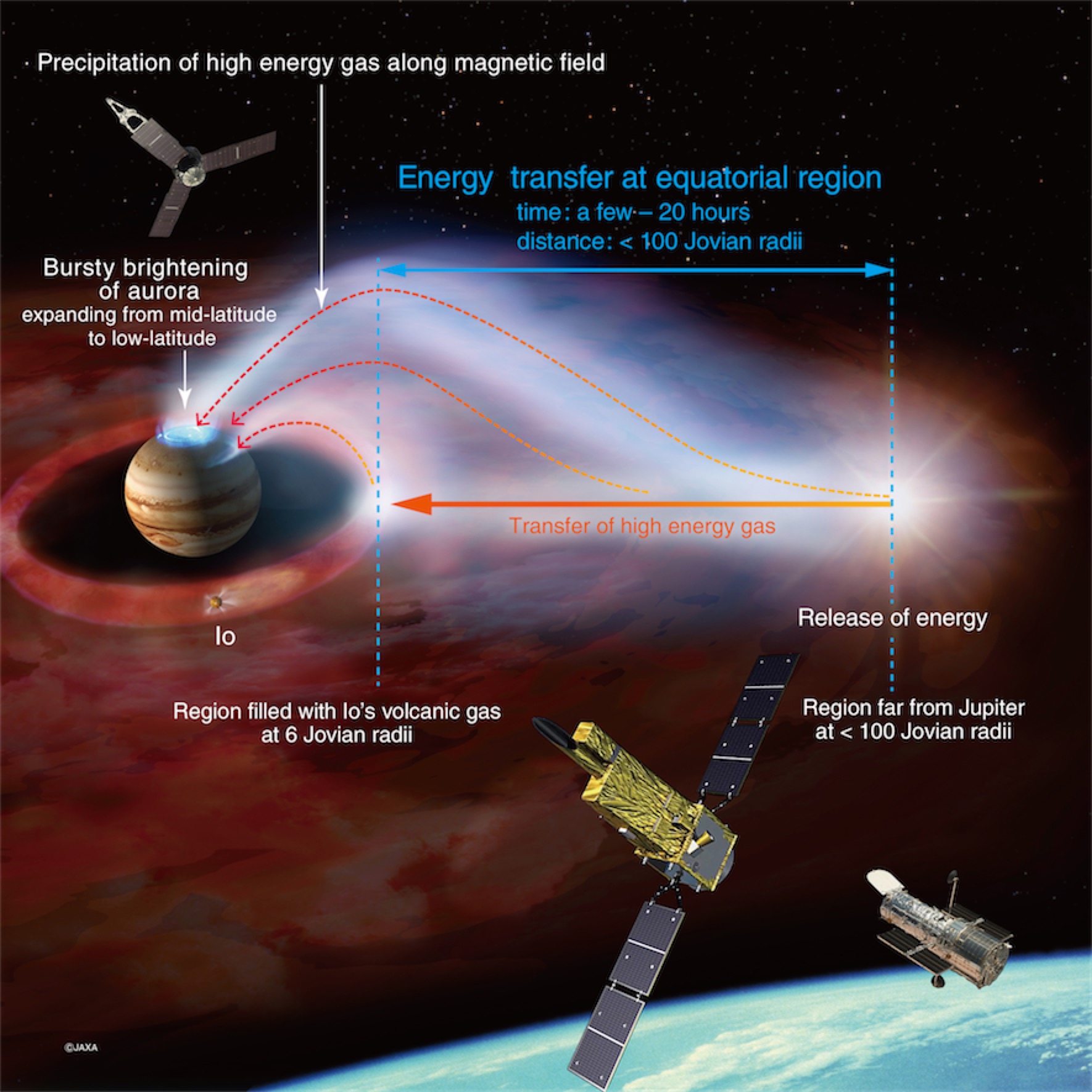
Combined observations from the Hisaki satellite, Hubble Space Telescope, and Juno explorer show that Jupiter's brightest auroral features recorded to date are powered by both the volcanic moon Io and interaction with the solar wind. (from RIKEN web site)
Published in Geophysical Research Letters of AGU. (Kimura et al. 2017, "Transient brightening of Jupiter’s aurora observed by the Hisaki satellite and Hubble Space Telescope during approach phase of the Juno spacecraft", DOI: 10.1002/2017GL072912)
Influence of the Solar Wind Deep Inside Jupiter's Magnetosphere

Hisaki observation revealed the influence of the solar wind deep inside Jupiter's magnetosphere which is the strongest in the solar system. Because Jupiter’s magnetosphere is huge and is rotationally-dominated, solar wind influence in its inner-part has been thought to be negligible. Thanks to long and continuous monitoring of the Io plasma torus (IPT) in Jupiter’s inner magnetosphere, it is found that the dawn-dusk asymmetry in the IPT brightness is enhanced upon rapid increases of the solar wind dynamic pressure. This result is the clear evidence that solar wind effect exists in Jupiter's inner-magnetosphere.
Published in Geophysical Research Letters of AGU. (Murakami et al. 2016, "Response of Jupiter's inner magnetosphere to the solar wind derived from extreme ultraviolet monitoring of the Io plasma torus", DOI: 10.1002/2016GL071675)
- Press Release
- https://www.isas.jaxa.jp/en/topics/000897.html
Hot Plasma Ring Orbited Around Jupiter
-Io's atmospheric outflow and its heating mechanism-
The distribution of plasma released in the outer space from the atmosphere of satellite Io of the Jupiter was observed in detail by Japanese space telescope satellite Hisaki for the planet observation. It was revealed from the analysis that the temperature around Io became high very much. The observation results of the Hisaki satellite become the clue understanding plasma heating mechanism occurring through interaction between astronomical bodies like Io and outer space. (from Tohoku University web site)
Published in Journal of Geophysical Research of AGU. (Tsuchiya et al. 2015, "Local electron heating in the Io plasma torus associated with Io from HISAKI satellite observation", DOI: 10.1002/2015JA021420)
Solar Wind Induces Jupiter’s X-ray Aurora
-Collaboration with X-ray telescopes-
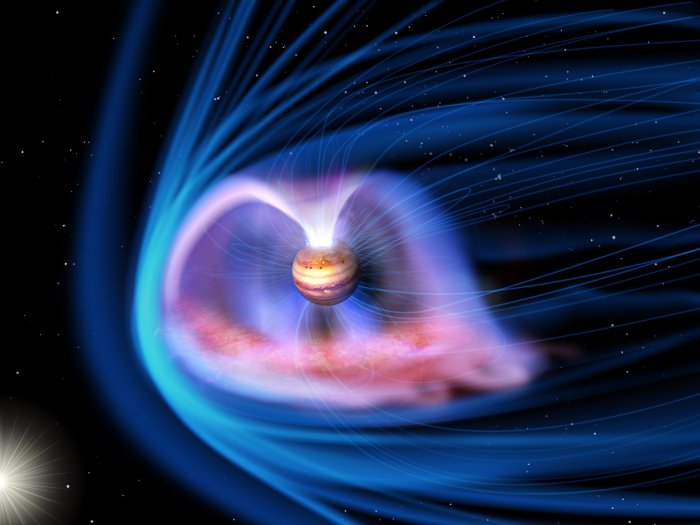
Jupiter’s X-ray aurora is thought to occur through collision of oxygen and sulfur ions moving at nearly the velocity of light with the Jupiter’s atmosphere. How can these ions be accelerated to such high speed? In order to investigate a spatial distribution of X-ray aurora brightness in the various solar wind condition, long-term monitoring is conducted by using the Chandra X-ray Observatory, X‐ray Multi-Mirror Mission (XMM-Newton) and Hisaki. Hisaki detected the timing of a change in solar wind condition, Chandra obtained the fine spatial structure of the X-ray aurora and its temporal variations, and the spectra taken by XMM-Newton showed that oxygen in the volcanic gases from the satellite Io and/or in the solar wind emited X-ray. Analysis using the observational data and a numerical model of the Jupiter’s magnetic field indicates that break-up of the X-ray aurora emission is driven by a change in the solar wind condition.
Published in Journal of Geophysical Research of AGU. (Kimura et al. 2016, "Jupiter's X-ray and EUV auroras monitored by Chandra, XMM-Newton, and Hisaki satellite", DOI: 10.1002/2015JA021893)
- Press Release
- https://www.isas.jaxa.jp/en/topics/000553.html
Explosion of Jupiter's auroral caused by rapid rotation
-Discovery by the Hubble Space Telescope and Hisaki satellite-
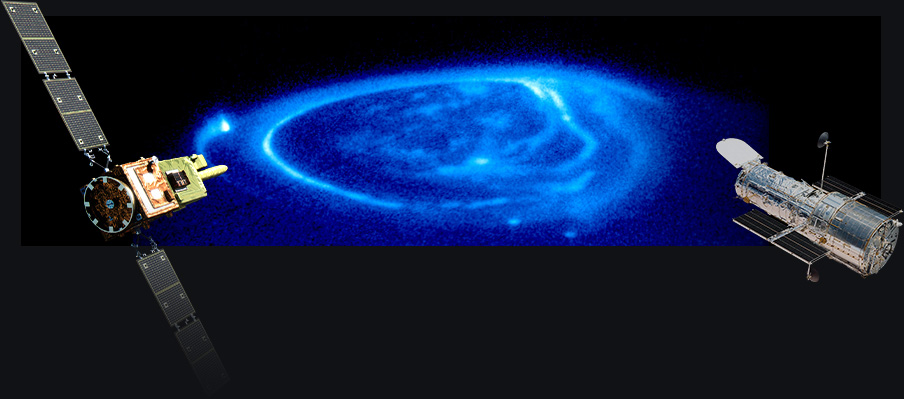
Auroral emission visualizes electromagnetic energy releases in planetary magnetospheres. Jupiter's magnetosphere has been considered to be activated by the internal corotating plasma in contrast with Earth's magnetosphere which is mainly activated by the solar wind plasma. The observations by the Hisaki and Hubble successfully captured the explosions of Jupiter's EUV aurora during the periods when the solar wind was very quiet. This explosion is interpreted as the 'internally-driven' type transient aurora, which is associated with the rotation and magnetic field of Jupiter rather than the solar wind. The highly resolved image taken by the Hubble indicated the morphologies of the auroras which are suggestive of global rapid activations of Jupiter's magnetosphere.
Published in Geophysical Research Letters of AGU. (Kimura et al. 2015, "Transient internally driven aurora at Jupiter discovered by Hisaki and the Hubble Space Telescope", DOI: 10.1002/2015GL063272)
- Press Release
- https://www.isas.jaxa.jp/en/topics/000577.html
A key process for the particle acceleration in Jupiter’s magnetosphere was given by Hisaki.
Jupiter is surrounded by strong magnetic field and its magnetosphere is known to be the largest particle accelerator in our solar system. These
high energy particles are thought to be accelerated by whistler-mode waves which is excited by anisotropic hot electrons injected from the outer magnetosphere. However, such electron transportation in the inner magnetosphere is not well understood. Using the extreme ultraviolet line emissions from the inner magnetosphere taken by Hisaki, we show the evidence for global inward transport of flux tubes containing hot plasma for the first time. This fast and continuous resupply of hot electrons is responsible for exciting the whistler-mode waves.
Published in Science. (Yoshioka et al. 2014, "Evidence for global electron transportation into the jovian inner magnetosphere", DOI: 10.1126/science.1256259)
